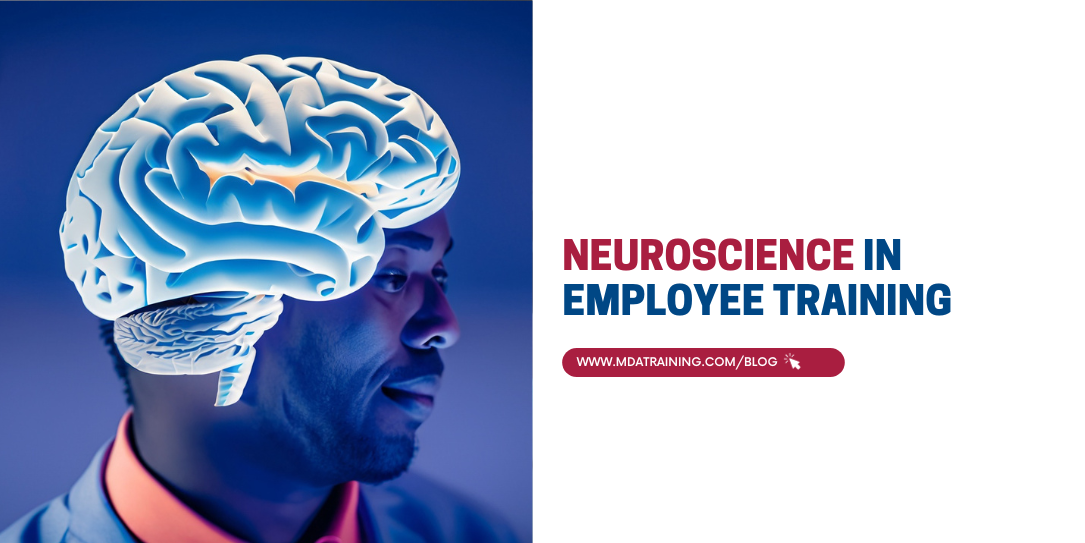Employee training has undergone a significant transformation over the years, evolving from traditional classroom settings to technologically advanced and neuroscience-informed approaches. Neuroscience, the scientific study of the nervous system and the brain, has provided valuable insights into how individuals learn, retain, and apply information. Understanding the brain's functioning and applying this knowledge to training methodologies can help unlock the maximum learning potential of employees.
The Neurobiology of Learning
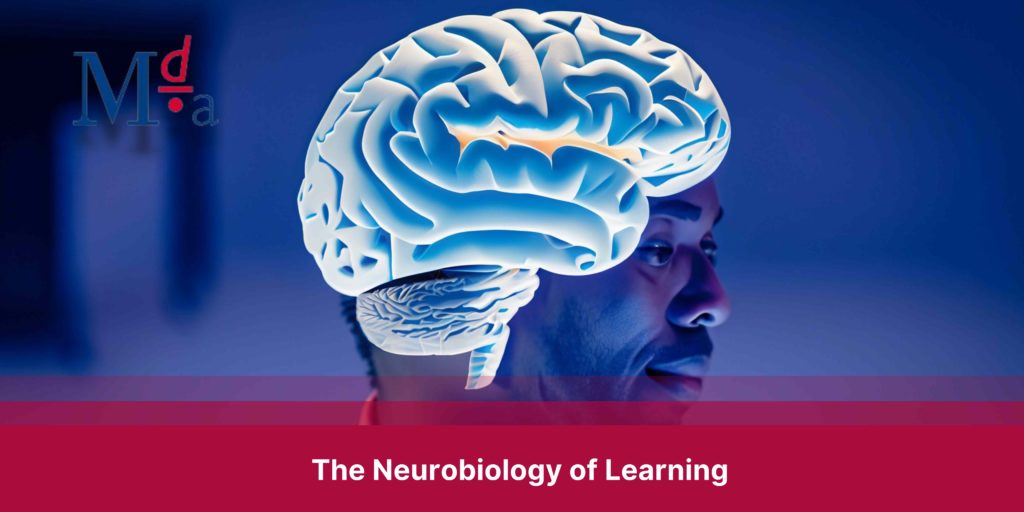
Learning is a complex neurological process involving various regions of the brain and intricate neural networks. When an individual is exposed to new information, the brain processes it through sensory perception, encoding, consolidation, storage, and retrieval. Here's a breakdown of these stages and how they relate to employee training:
1. Sensory Perception:
During training sessions, sensory stimuli like visual, auditory, or kinesthetic inputs are crucial. Effective training materials should be designed to capture attention and engage multiple senses, enhancing the encoding of information.
2. Encoding:
Encoding involves converting sensory information into neural codes that the brain can understand and process. This step is vital for memory formation and is influenced by factors such as relevance, repetition, and emotional engagement during training.
3. Consolidation:
After encoding, the brain consolidates the information into long-term memory. Adequate rest, sleep, and spaced repetition strategies play critical roles in this stage, enhancing the durability and accessibility of the learned material.
4. Storage and Retrieval:
Information stored in the brain can be retrieved when needed. Effective training should promote efficient retrieval by using recall exercises, practical application, and real-world scenarios.
Neuroplasticity and Training Adaptations
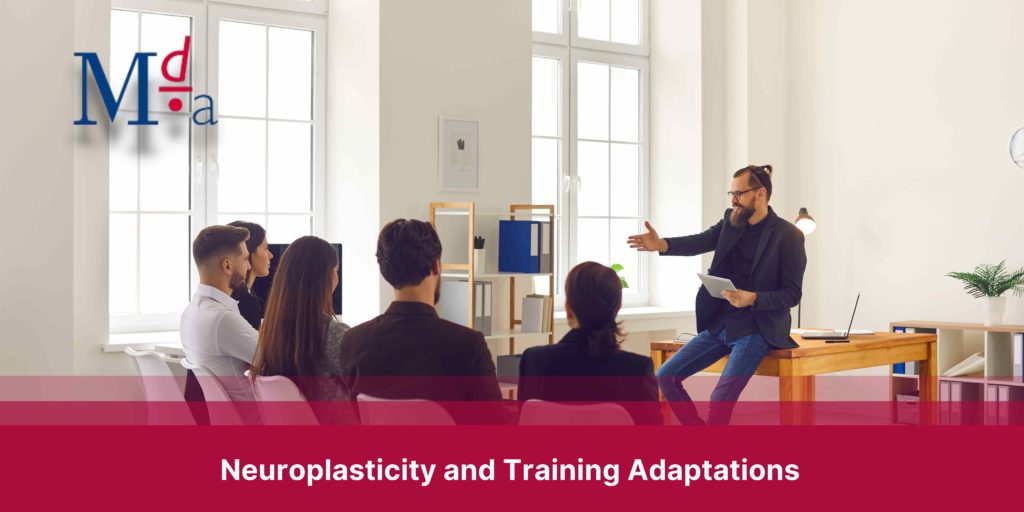
Neuroplasticity, the brain's ability to reorganise and adapt its structure and functions, is a cornerstone of learning. Employee training can harness neuroplasticity by creating experiences that encourage the brain to rewire itself. This can be achieved through:
- Continuous Learning Programs: Offering ongoing training opportunities allows for consistent stimulation of neural pathways, promoting lasting changes in the brain's structure.
- Multimodal Training: Incorporating a variety of training methods (e.g., visual, auditory, hands-on) engages multiple brain regions, optimising neuroplastic responses.
- Adaptive Learning Technologies: Utilising AI-powered adaptive learning platforms tailors training content based on individual performance, optimising learning and leveraging neuroplasticity.
Emotions and Learning: The Limbic System's Role
The limbic system, particularly the amygdala and hippocampus, plays a crucial role in processing emotions and memory. Emotional engagement significantly impacts learning and memory retention. Incorporating emotional elements in training, such as storytelling or case studies, can activate the limbic system, enhancing the overall learning experience.
Stress Management and Learning
Stress can have detrimental effects on learning and memory. High levels of stress hormones, such as cortisol, can impair the hippocampus, a key region for memory and learning. Training programs should integrate stress management techniques, mindfulness practices, and a supportive learning environment to mitigate the negative impact of stress on learning.
The Science of Simulation and Learning
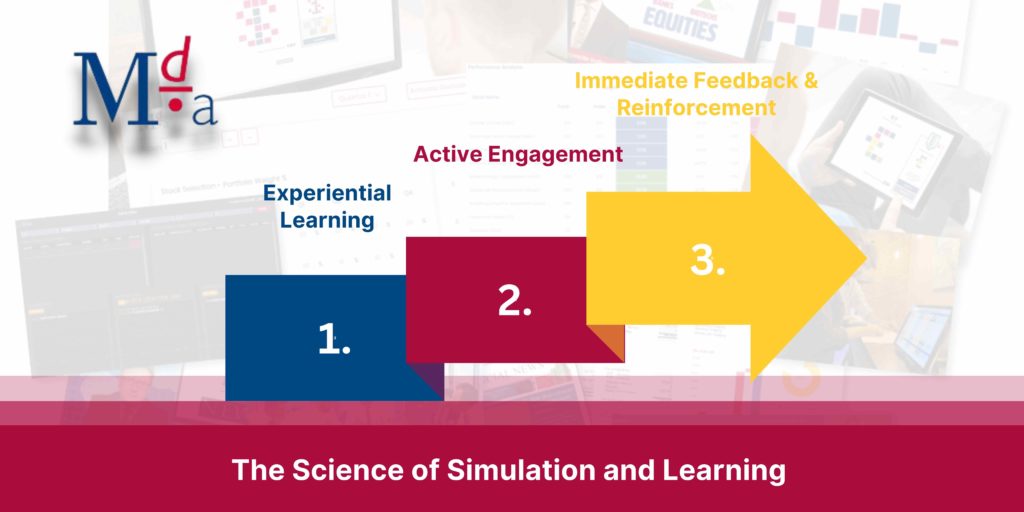
Business simulation is an immersive learning experience where employees engage in lifelike, interactive scenarios that mimic real-world business situations. These simulations offer a risk-free environment for individuals to make decisions, learn from the outcomes, and adapt their approaches accordingly. From a neuroscience perspective, business simulations are profoundly effective due to several reasons:
1. Experiential Learning:
Business simulations provide experiential learning, a methodology deeply rooted in neuroscience. Experiences create neural connections, and the more senses and emotions involved, the stronger the connections. Simulations replicate real experiences, activating sensory and emotional regions in the brain.
2. Active Engagement:
Active engagement is crucial for memory formation. Simulations require participants to actively engage with the content, making decisions, analysing outcomes, and adjusting strategies. This active involvement triggers higher levels of cognitive processing and retention.
3. Immediate Feedback and Reinforcement:
Simulations offer immediate feedback on decisions, activating the brain's reward system. This feedback loop reinforces learning by associating decisions with outcomes, a fundamental principle of how the brain processes and encodes memories.
Benefits of Business Simulation in Employee Training
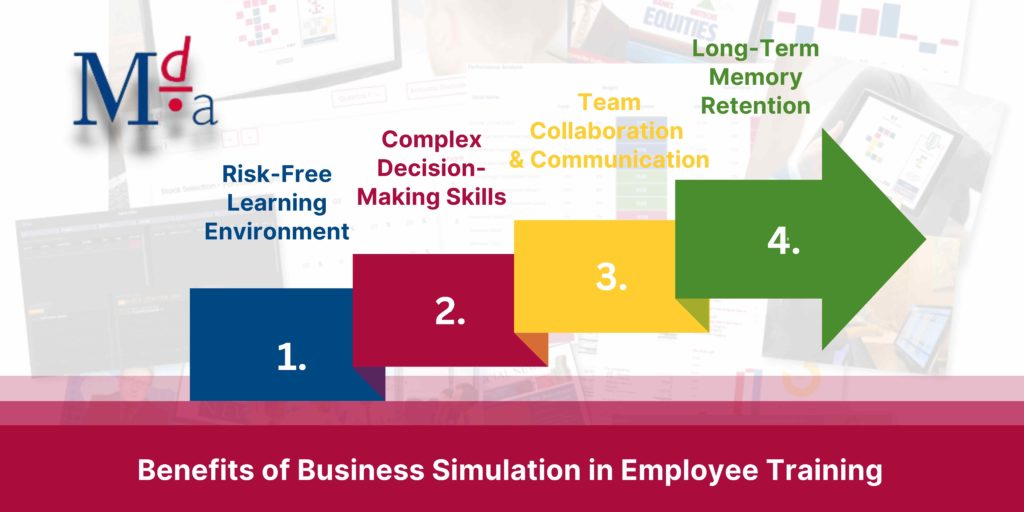
1. Risk-Free Learning Environment:
Simulations provide a safe space for employees to experiment and make mistakes without real-world consequences. The brain responds positively to low-stakes environments, allowing for more creative thinking and risk-taking.
2. Complex Decision-Making Skills:
Modern businesses demand employees to possess complex decision-making skills. Simulations present intricate scenarios, allowing employees to practise and enhance their decision-making abilities, critical for their roles.
3. Team Collaboration and Communication:
Many business simulations are designed for group participation, fostering teamwork, collaboration, and effective communication. Neuroscience highlights the brain's social nature and its inclination to learn through interaction and collaboration.
4. Long-Term Memory Retention:
Engaging employees in dynamic and interactive simulations promotes long-term memory retention. The brain's ability to link experiences to learning enhances recall and application of knowledge in real-world situations.
What’s Next?
Comprehending the neuroscience of learning is crucial when creating impactful employee training initiatives. By integrating neuroscience insights into training approaches, businesses can tap into the fullest potential of employee learning. Harnessing neuroplasticity, effectively managing emotions, mitigating stress, and incorporating AI are fundamental measures in optimising employee training for upcoming advancements. Embracing the evolving field of neuroscience promises deeper insights, facilitating continuous improvement and augmentation of training tactics, ultimately advantageous for both employees and organisations. Reach out to MDA Trainers today to discover how MDA Training can leverage business simulations for enhanced learning experiences.









